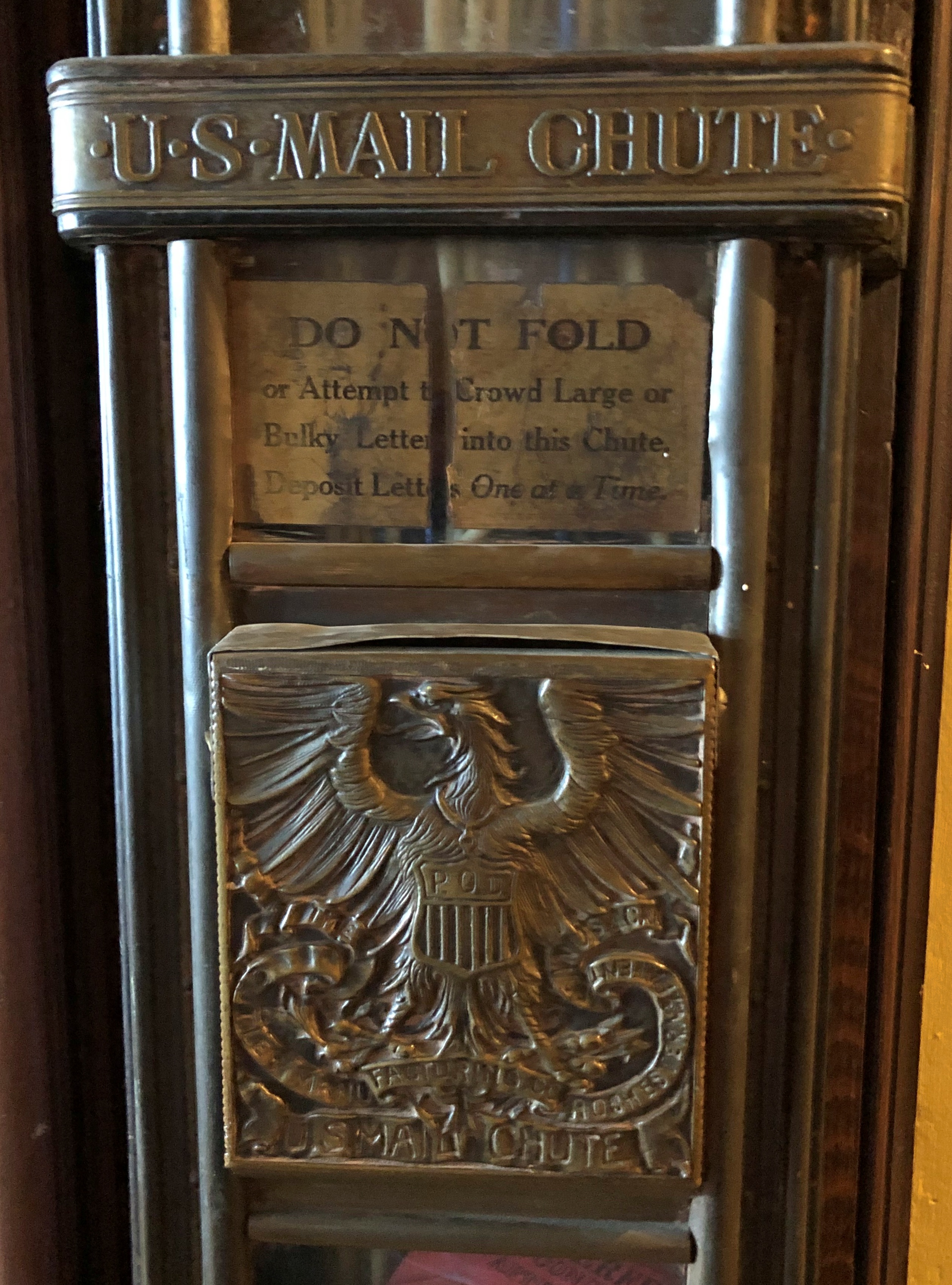This year on Halloween, I found myself wondering when the apostrophe mostly disappeared from Hallowe’en, at least in U.S. usage. The charts posted at a site called Grammar Revolution (though without citation) offer some information on the question. Hallowe’en, as one might see on a card old enough to be in the public domain, was a more common spelling in the early 20th century.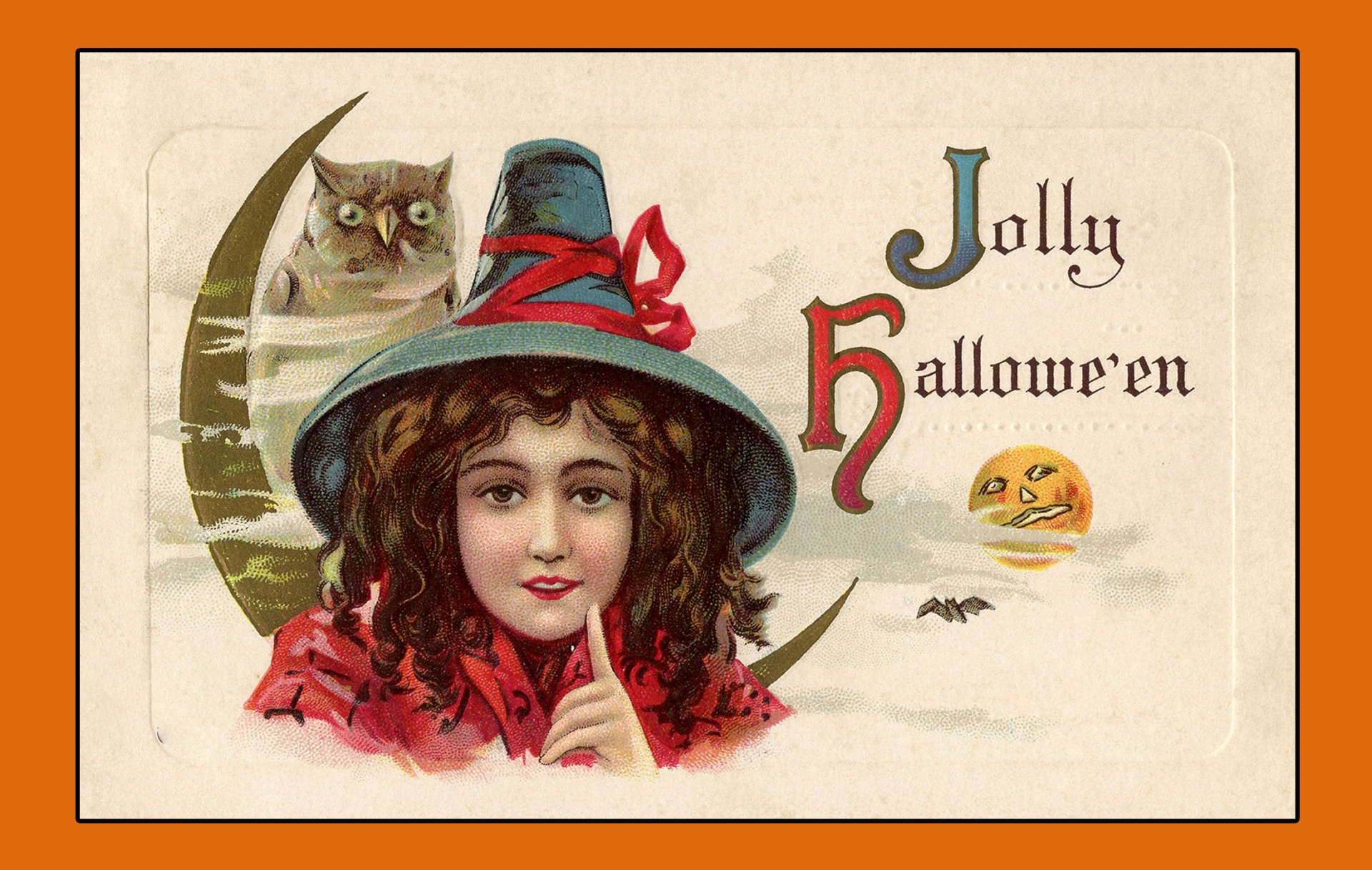
Around the time of World War II, the apostrophe version started its decline, with the non-apostrophe Halloween becoming more common by far since then. That leads me to the conclusion that apostrophe rationing during WWII inadvertently had a long-term impact. History is funny that way.
The last few days of October this year have been unusually pleasant. On Tuesday the 29th, for instance, I was able to dine al fresco in the afternoon quite comfortably. Yesterday, the 30th, it was still warm enough to sit on our deck in the evening in short sleeves, though the wind was up.
Halloween itself, following rain in the morning, was still windy, but a lot colder. That didn’t deter exactly 30 kids who came to our door for candy – about three-quarters of them before dark. We gave away full-sized Hershey products, which pleased the older kids especially, along with small bags of Utz pretzels, which no one commented on. I didn’t wear a costume for distribution, but I did put on my fez. It was a Christmas present from Jay some years ago, but there are sadly few occasions to wear it. I’d say Halloween or even Hallowe’en is one such.
Back on the October 19 (it was warm then, too), we spent at least an hour getting into, and wandering around, the Fine Arts Building at 410 S. Michigan Ave. Here it is, blocking the sun.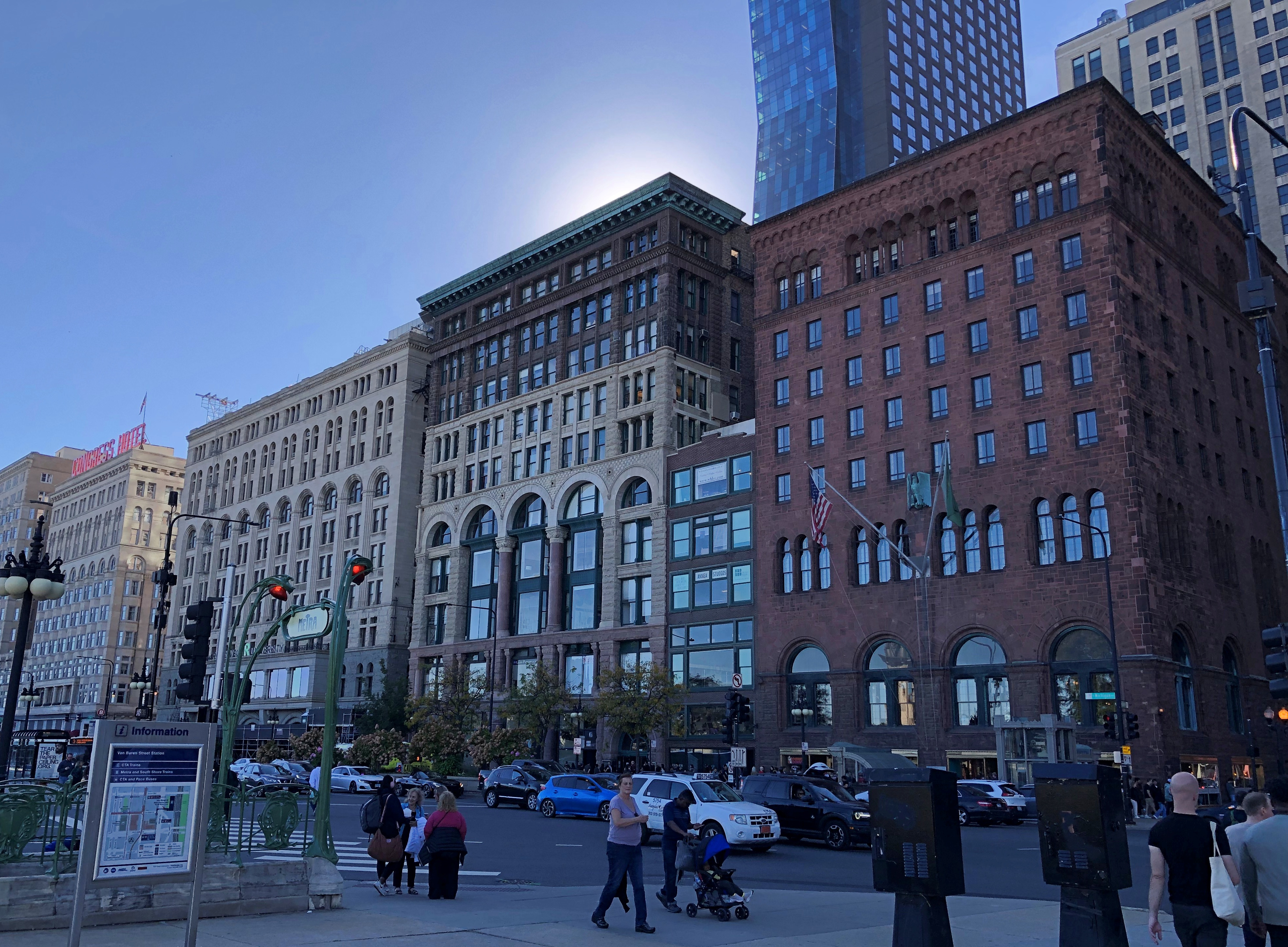
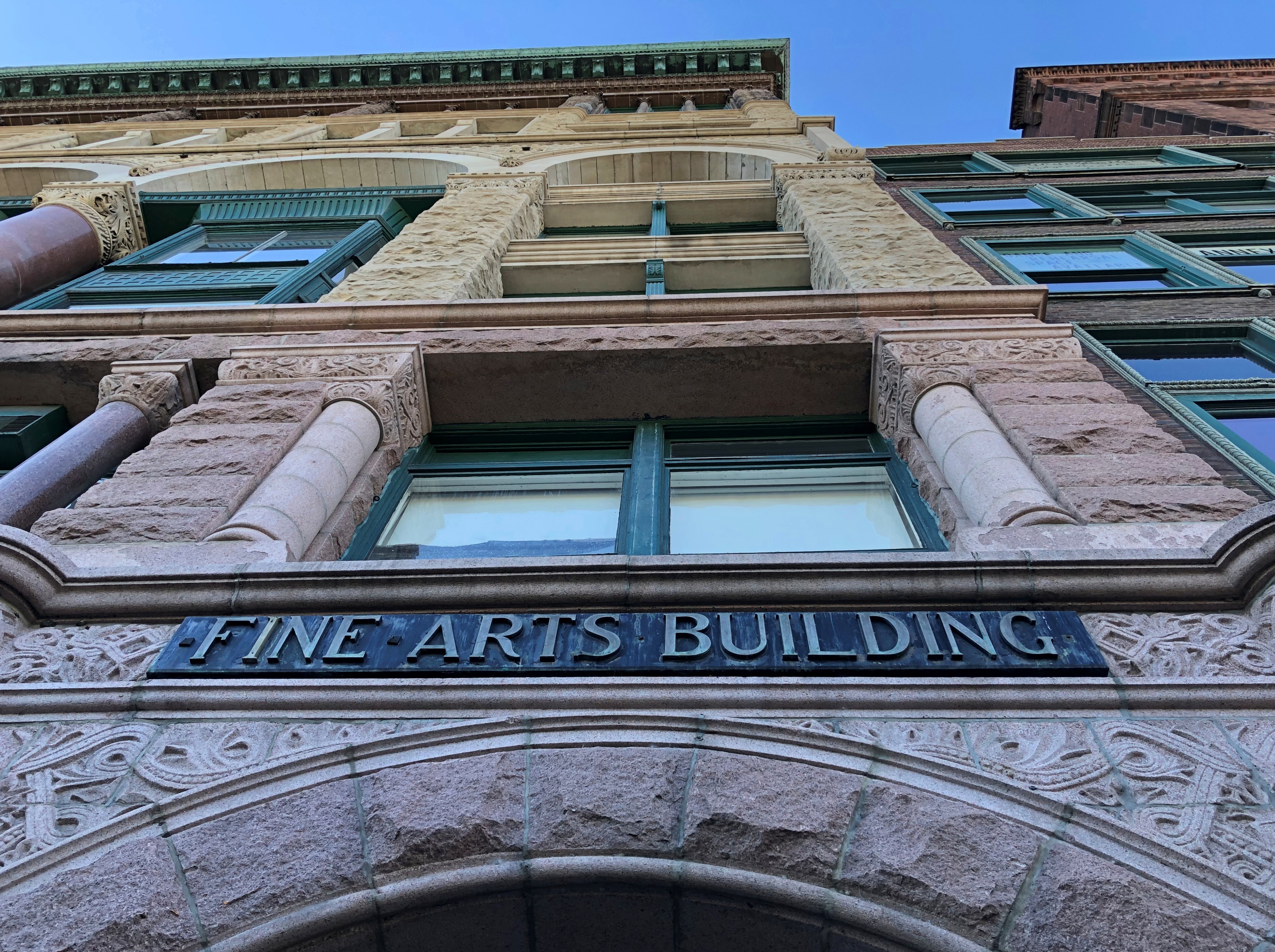
Like most vintage buildings, it began as something else: a factory and a showroom for Studebaker, when that company made carriages. The architect who designed it in 1885, Solon Beman (who did the Pullman company town too, among other things), did a redesign in 1898 when Studebaker left, thus creating a rather unusual office building. Since then, the Fine Arts Building has been just that, home to art galleries and artist studios, theater companies, publishers, dance and recording studios, musicians and musical instrument specialists, interior designers, and other arts-associated businesses.
For Open House Chicago, you can wander its long halls.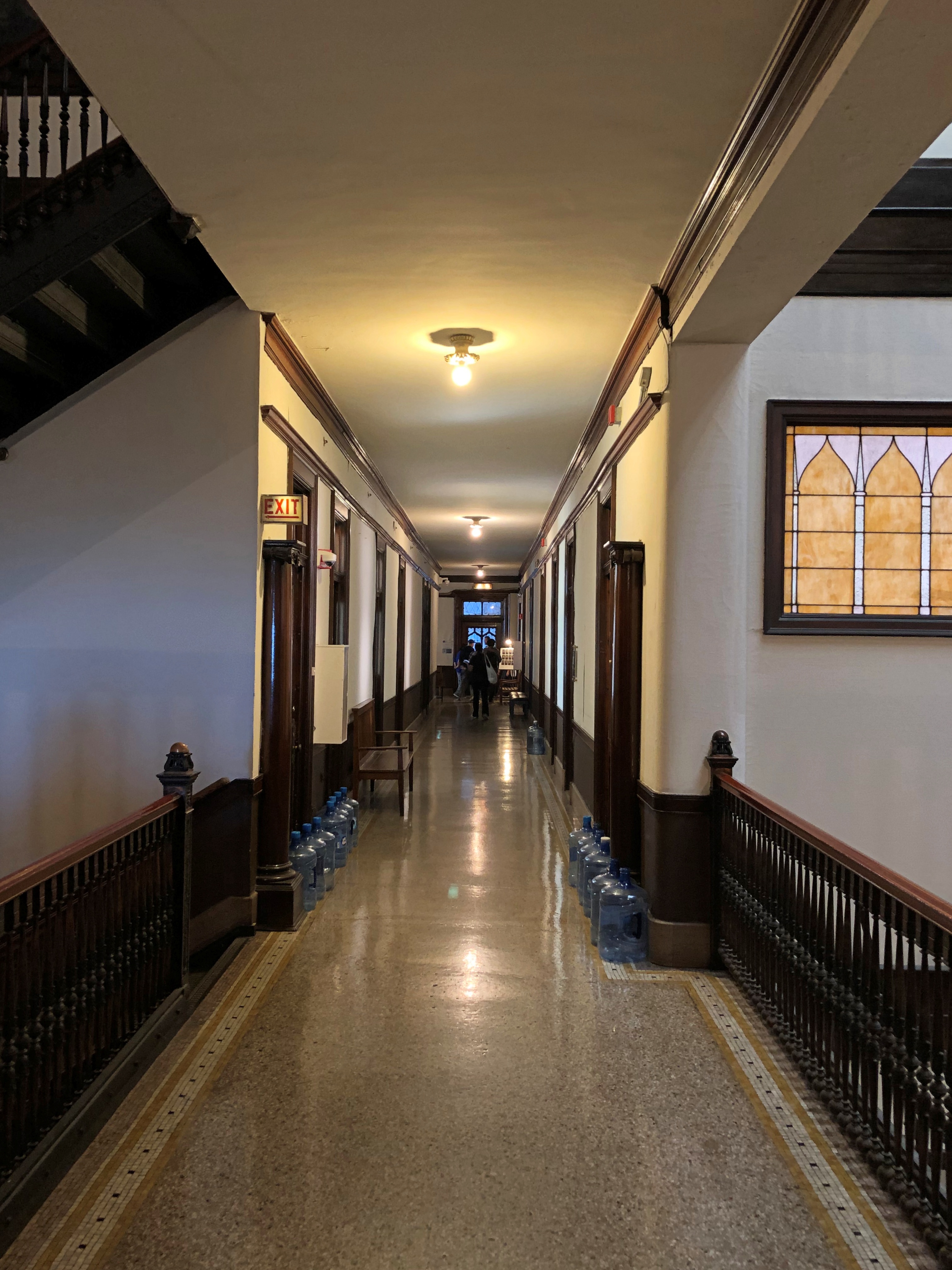
The current tenant directory makes for interesting reading, much more than almost any other office building: designers such as Doorways of Chicago; artists such as L.H. Selman, Ltd., Fine Glass Paperweights; performers such as the Chicago International Puppet Theater Festival; very specialized music shops such as Parke Mouthpiece Center, offering “professional brass mouthpieces for trumpet, trombone, horn, & tuba. Interchangeable rims, cups, backbores, tops, & underparts.”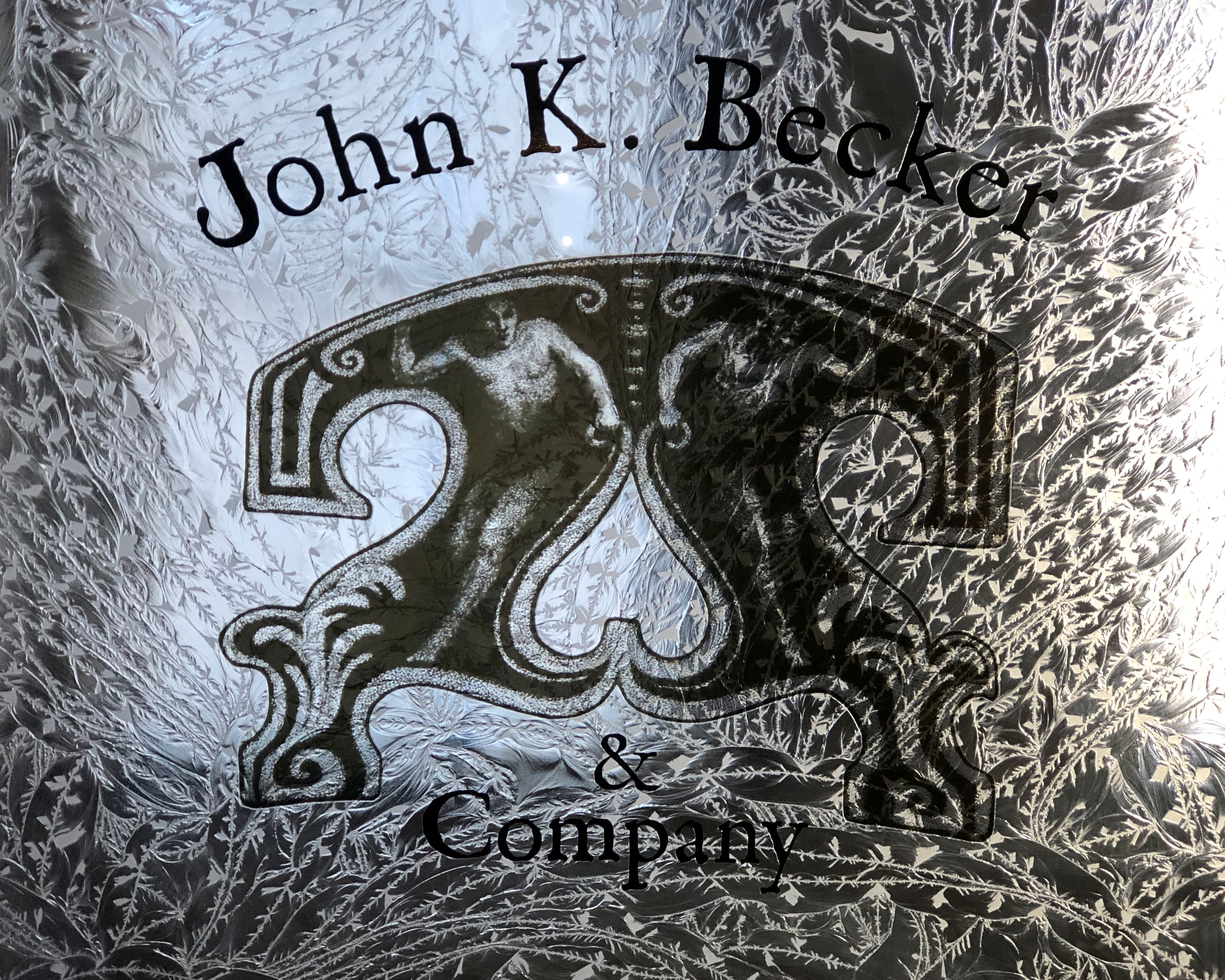

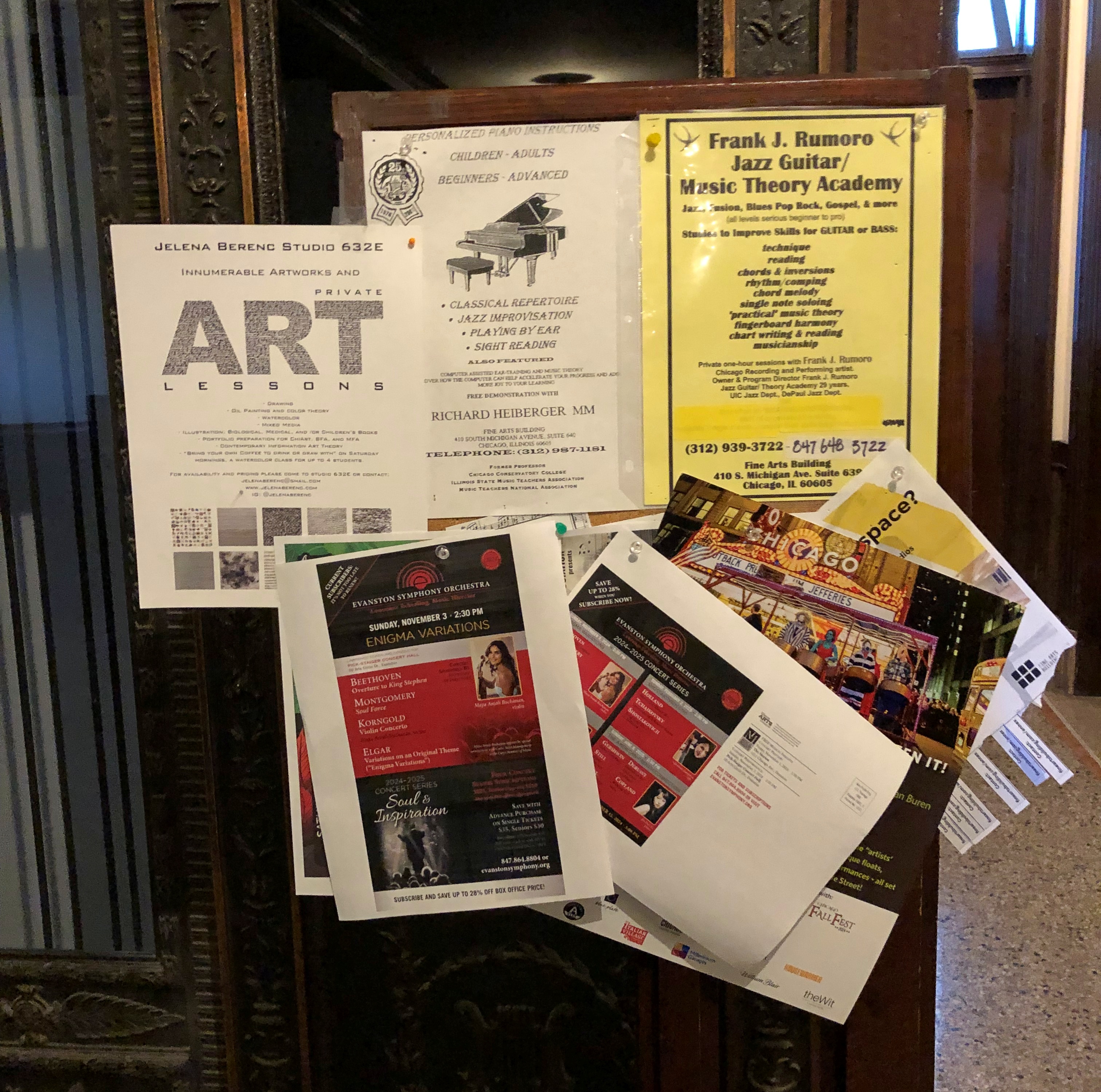
Some of the businesses were open for the event.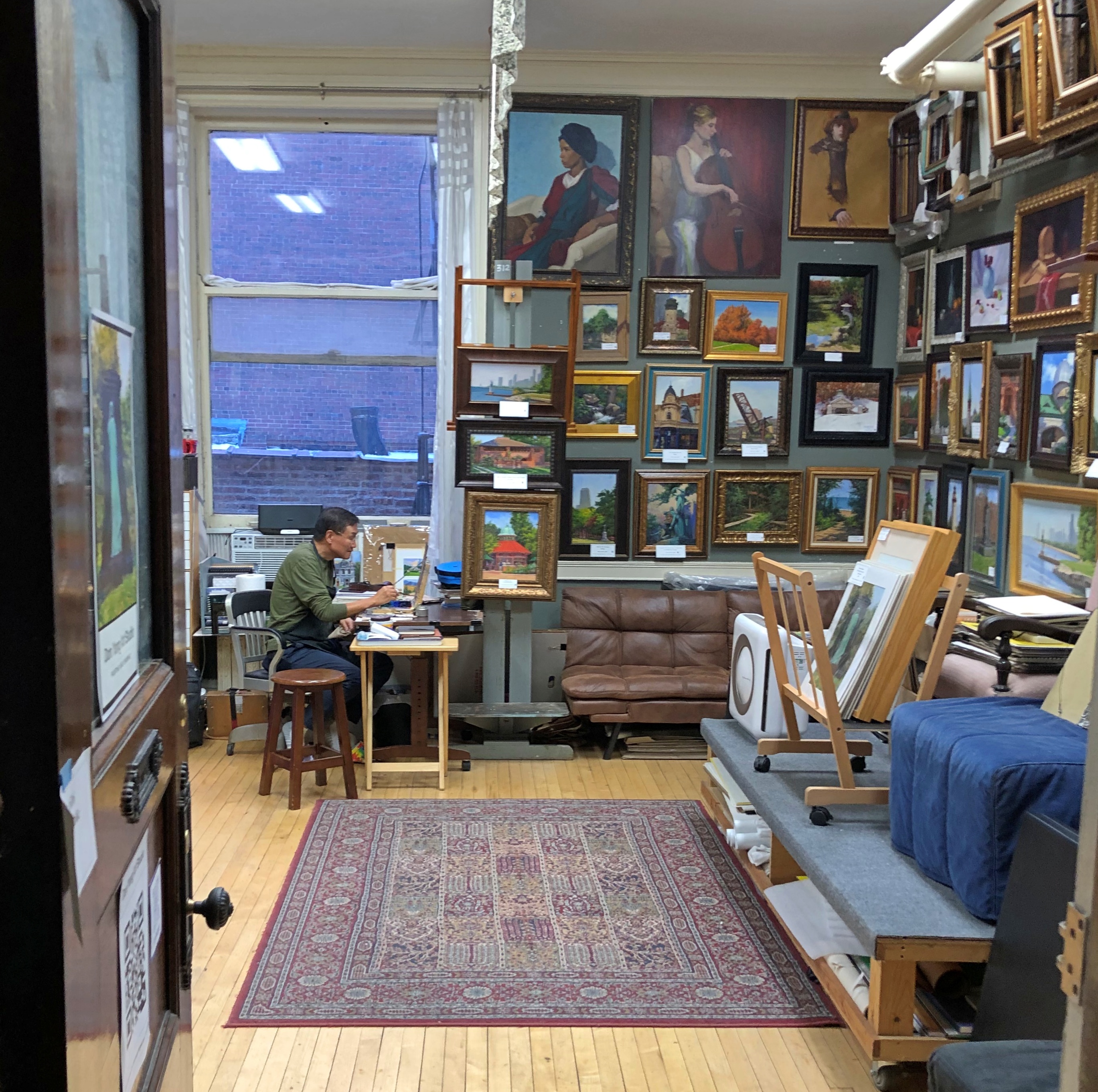
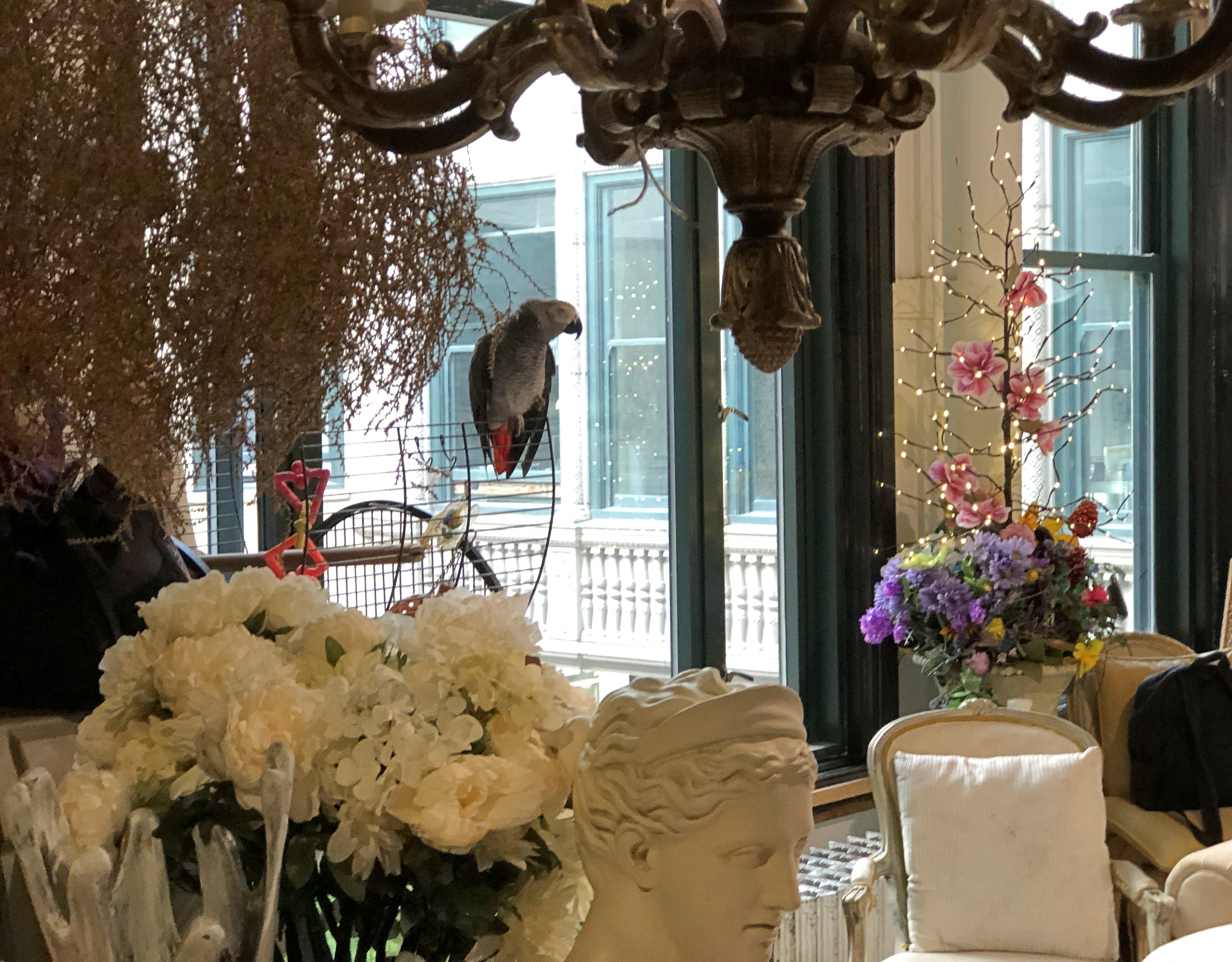
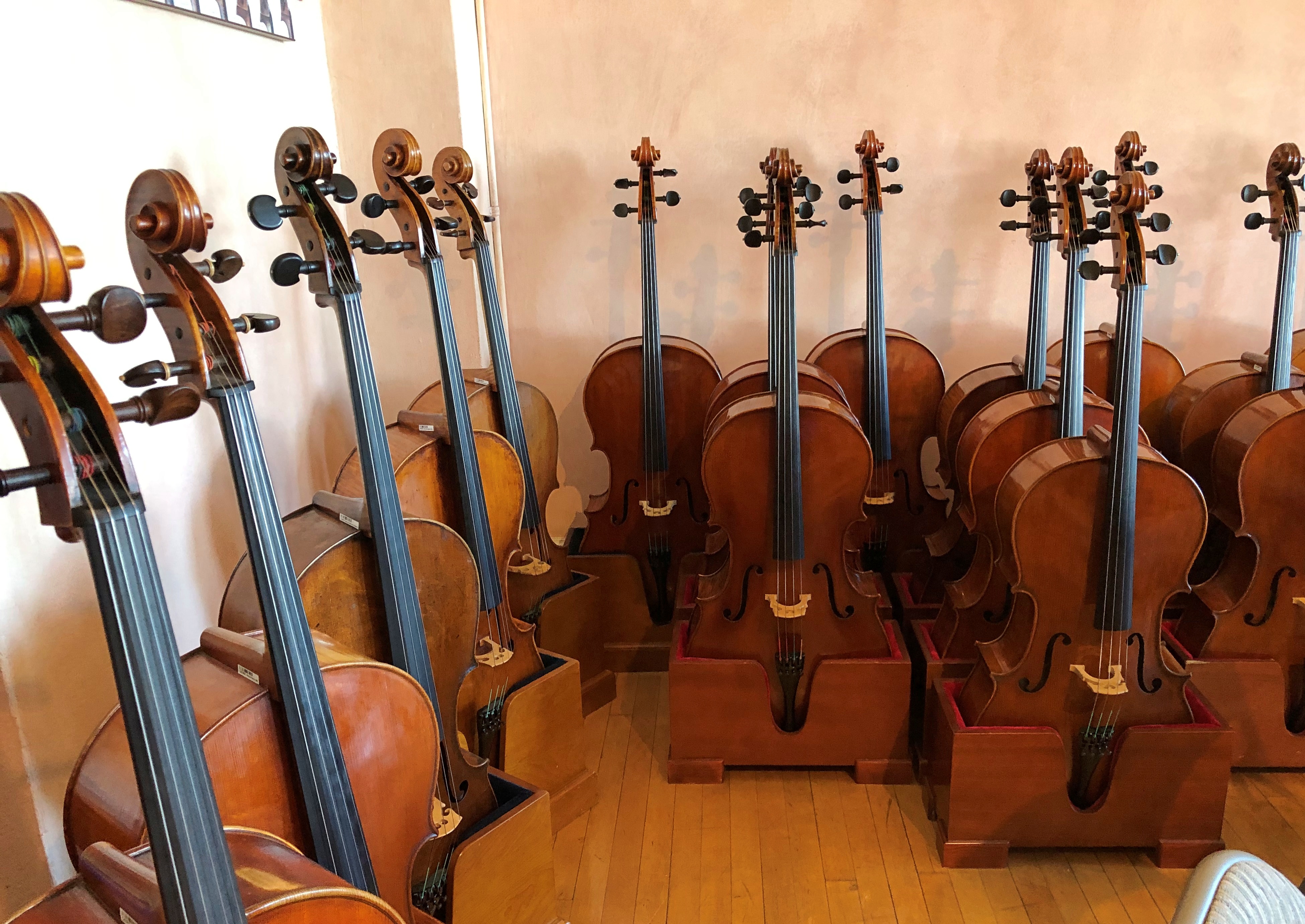
The Fine Arts Building is of course going to feature art on its walls.
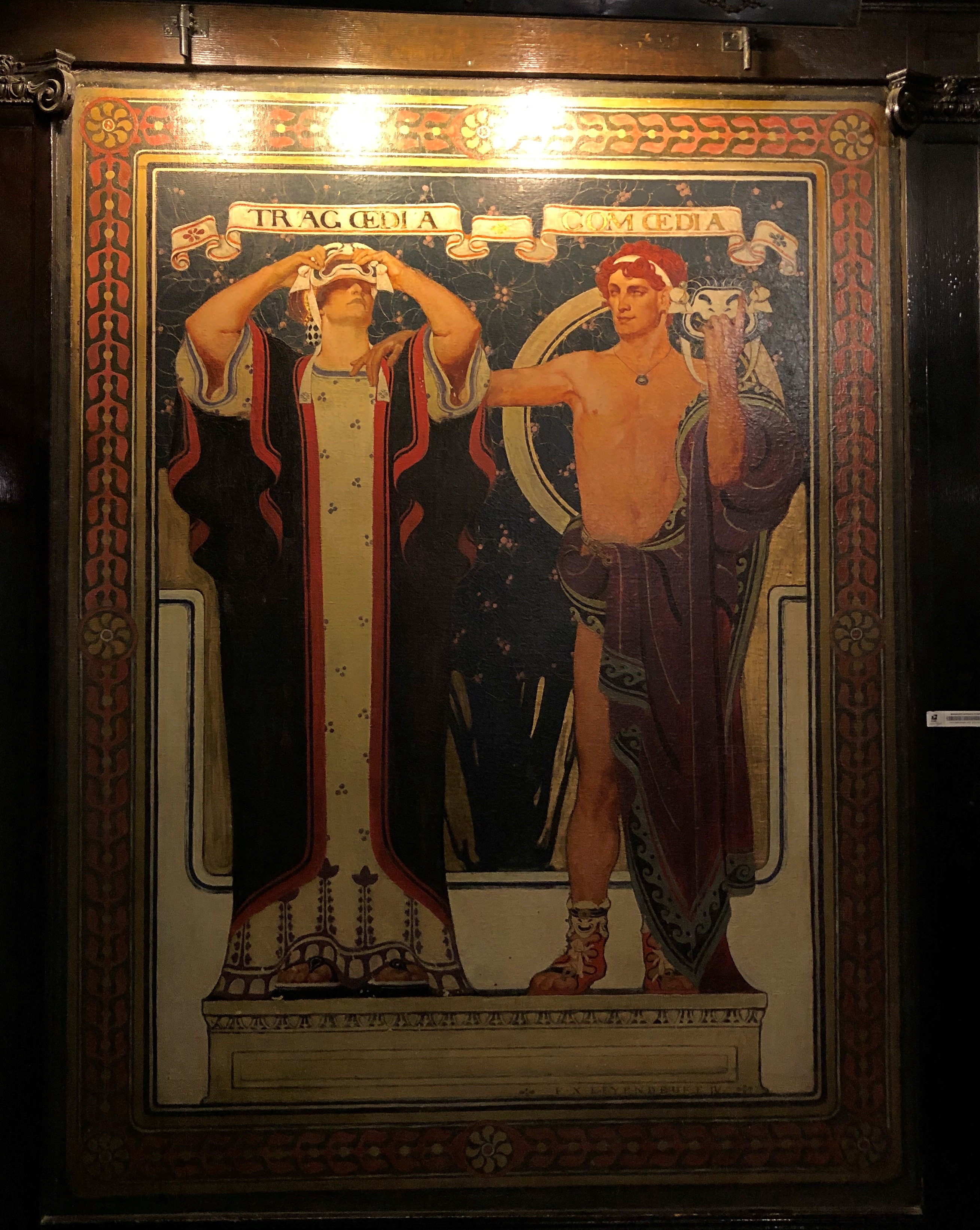

Plus a lot of fine old details, such as for the manually operated elevators – the only ones in Chicago, I’m told.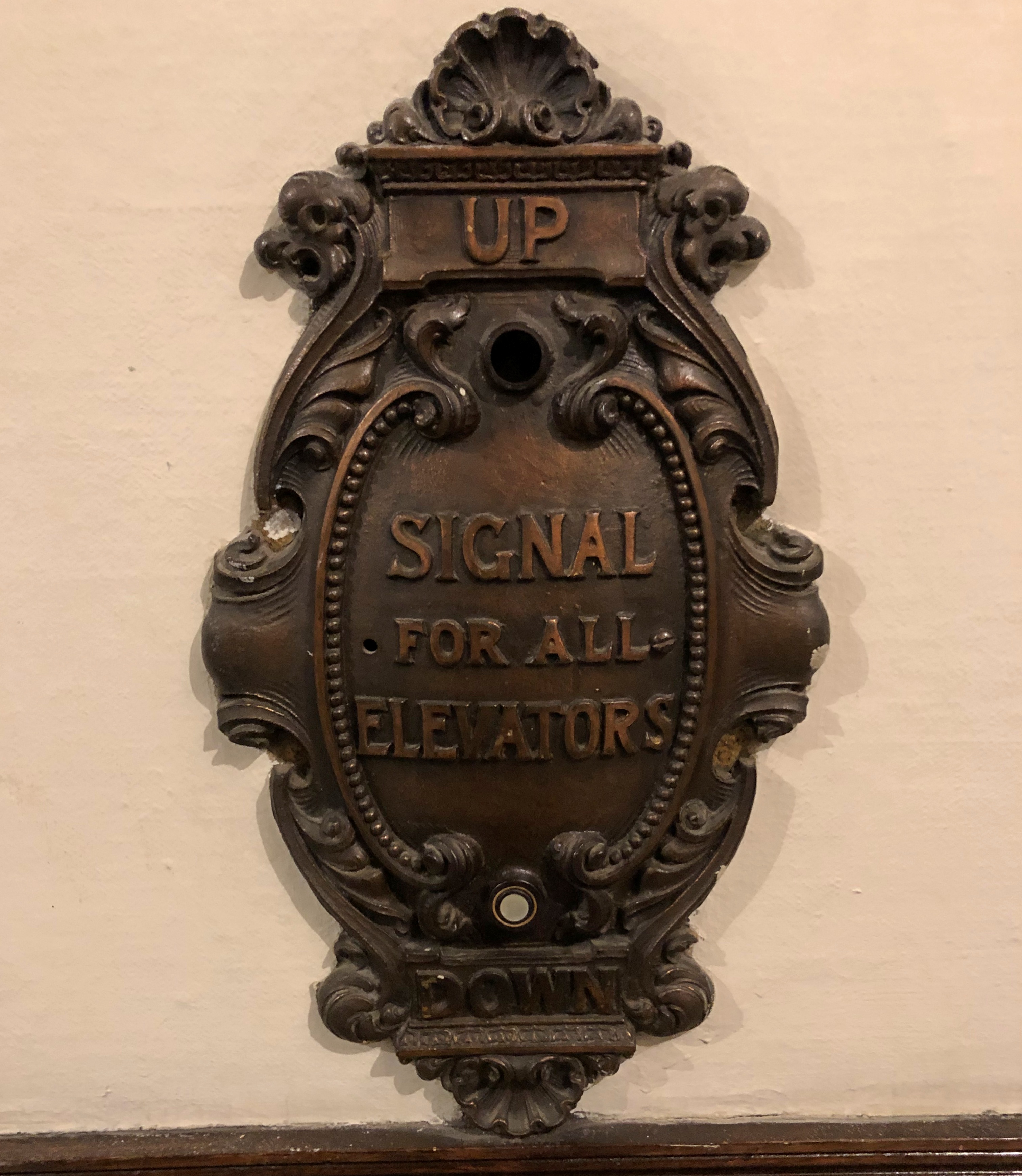
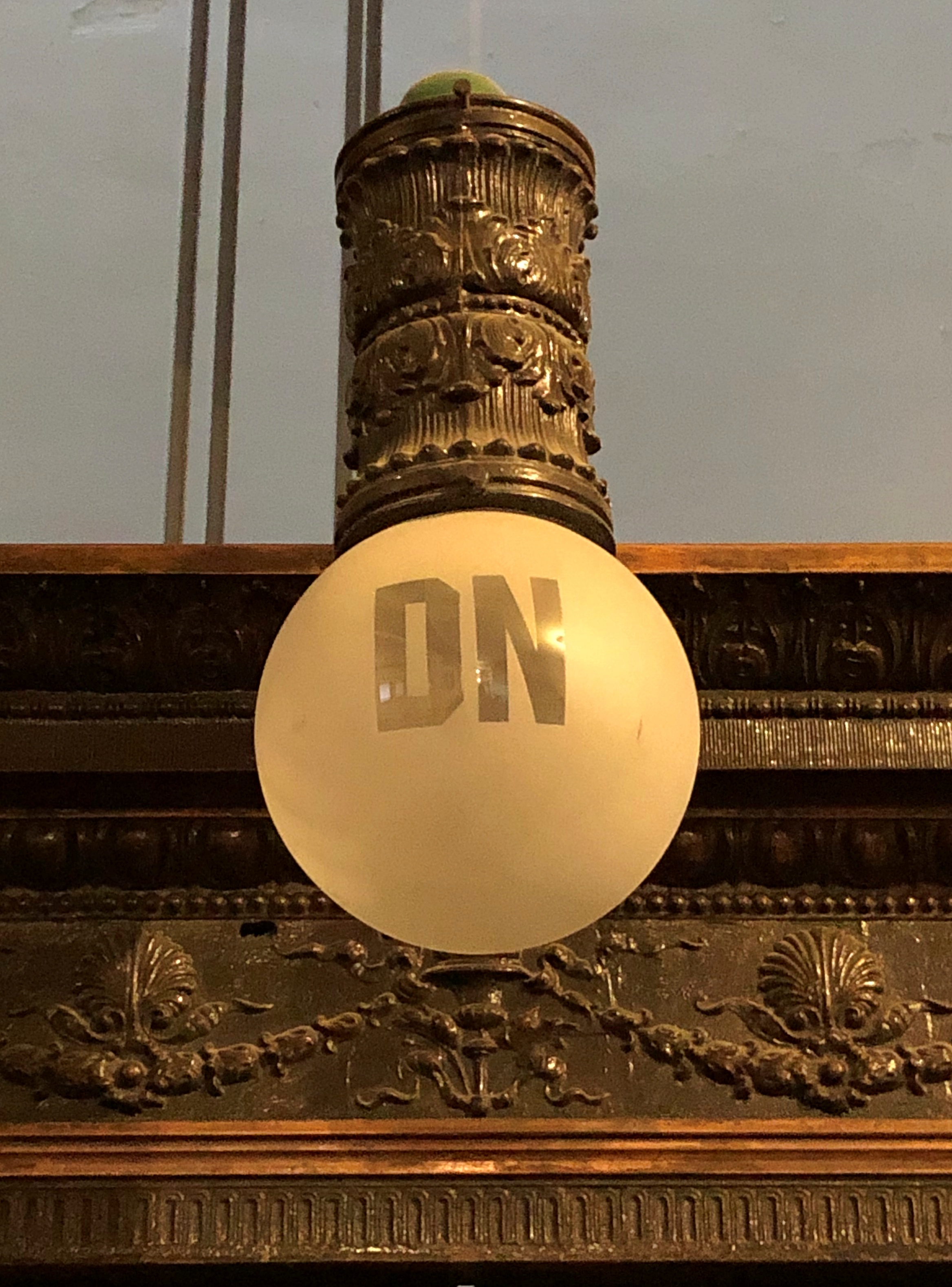
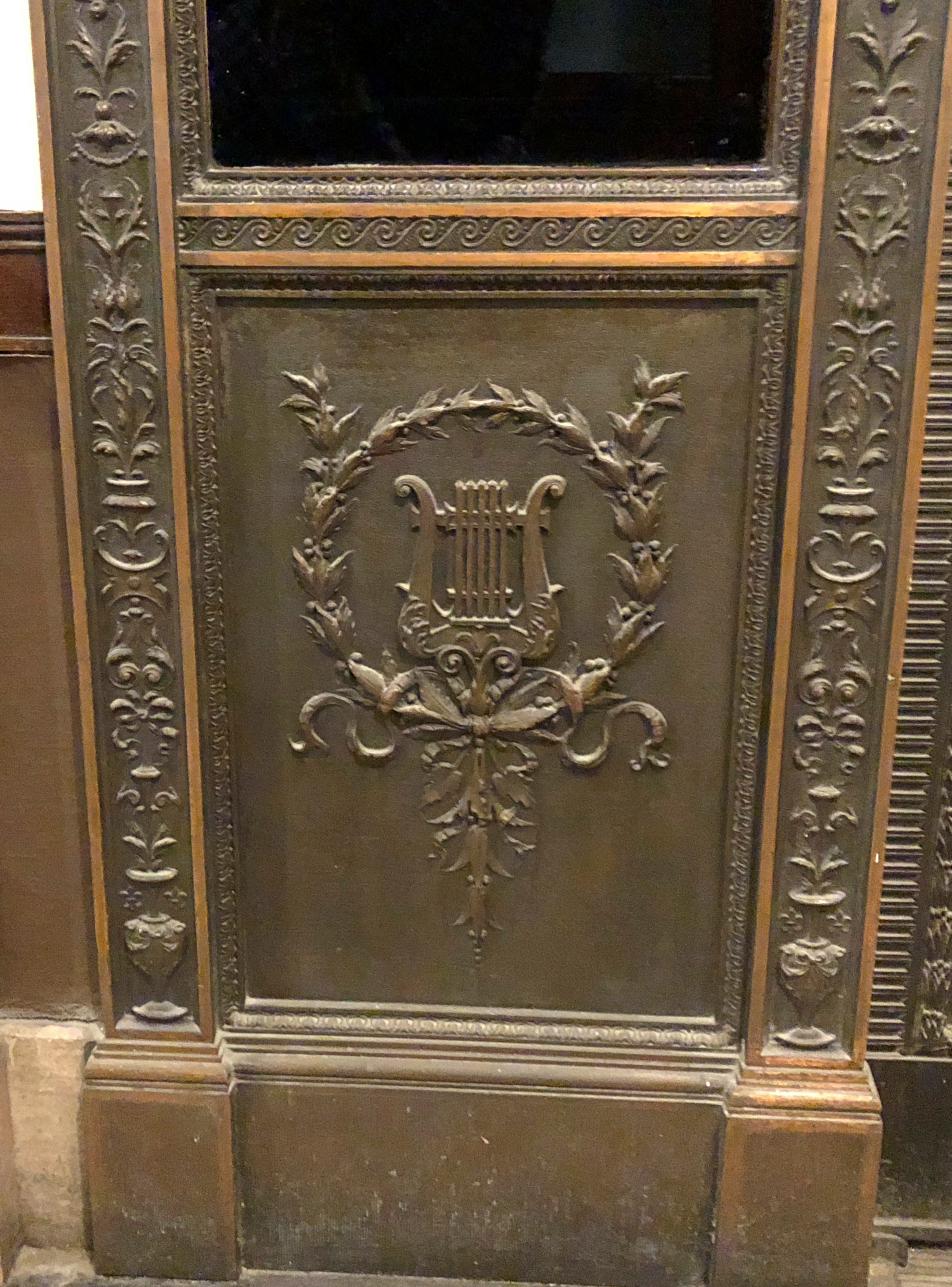
That was it for Open House Chicago this year. Still as fine an event as ever, except for one thing: no paper guides and their useful area maps provided to eventgoers, which disappeared when the event was revived in 2021. Sure, they cost money to produce, but I seem to remember advertisements in them that might have offset costs somewhat, or maybe entirely. Just another small step on the road to further map illiteracy.
Next year, Open House New York? We shall see.
